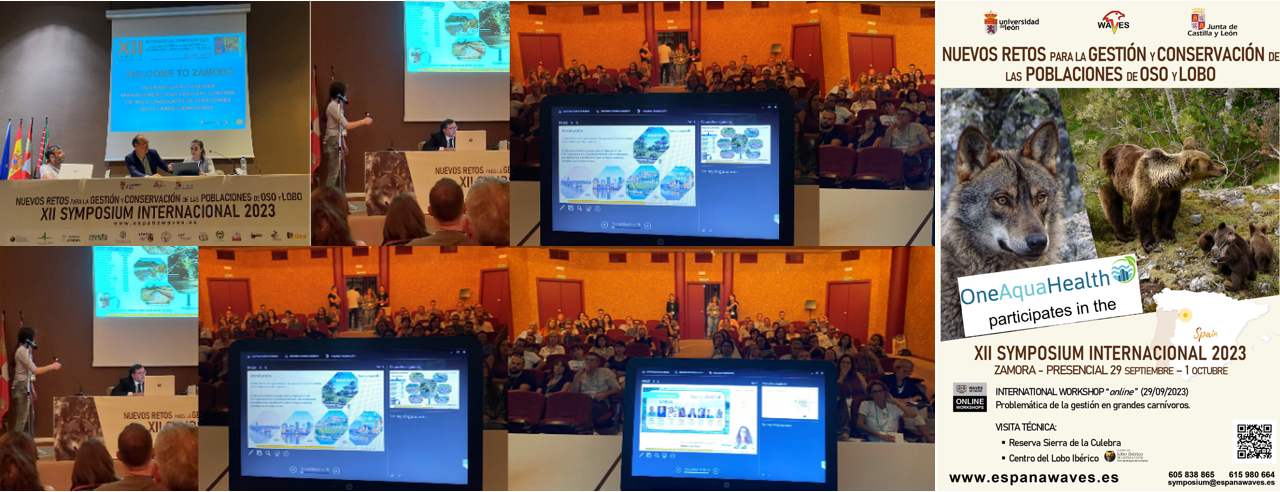
OneAquaHealth at the XII INTERNATIONAL SYMPOSIUM 2023
28th September to 1st October in Zamora, Spain
At the XII International Symposium 2023, which took place from 28th September to 1st October 2023 in Zamora (Spain) 50 presentations were held on the sustainable management of environments in which wild ungulates, wolves and bears live. The Department of Veterinary Medicine and Animal Production of the University of Naples Federico II, which is also a partner in the OneAquaHealth project, participated with a presentation with the title “Wild boar, water and biodiversity, a complex network to obtain One Health and the sharing of ecological spaces between living beings”. The authors (Nadia Piscopo, Oscar Tamburis, Fabiana Esposito, Maria Manno, Riccardo Primi, Maria Feio, Luigi Esposito) have presented this work as a component of the preliminary phase of “OneAquaHealth” project and explain its main objectives: 1) identify the highest number of living species linked to the urban aquatic ecosystem; 2) describe, from a One Health perspective, the interconnections between biodiversity and the citizens who use waterways (rivers, streams, canals) included in the urban context. The study was conducted in the urban area of Benevento (Italy), one of the five sampling sites of the project, using camera traps installed on 16 watercourses and testify to the presence of wildlife. From January to July 2023, the images, which were collected made it possible to identify the presence of wild boar. The results obtained demonstrate that the populations present in the survey area have an increasing trend from January to June attributable to the class of striped animals (40.6%) born during reproductive period. It has been demonstrated that each wild boar is accompanied by numerous internal and external guests, which spread over the territory and to other living beings with greater incidence in the spring months. Some examples supported by the bibliography and not yet by our experimental analysis are represented by ecto and endoparasites, bacteria and viruses. At present, it is possible to describe 26 ectoparasites (10 types of ticks, 11 types of mosquitoes, 3 types of flies, 1 flea and 1 louse) and 10 endoparasites (1 nematode, 4 trematodes, 2 tapeworms, 3 protozoa). Potential etiological agents of diseases in wild boar are represented by 29 bacteria and 6 viruses. No fungal skin infection is described. Finally, a microbiome analysis indicates the presence of 65 bacteria in the large intestine. In conclusion, our work clearly indicates the indispensable diagnosis of the ecosystem which appears possible using the wild boar as one of the indicators of One Health.
Author(s): Luigi Esposito, University of Naples Federico II